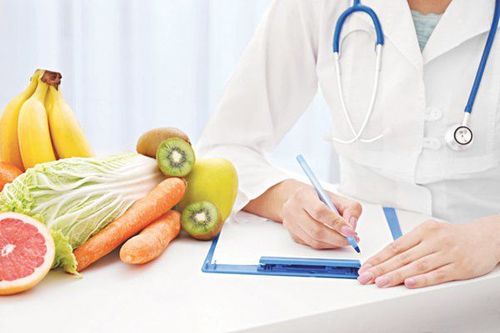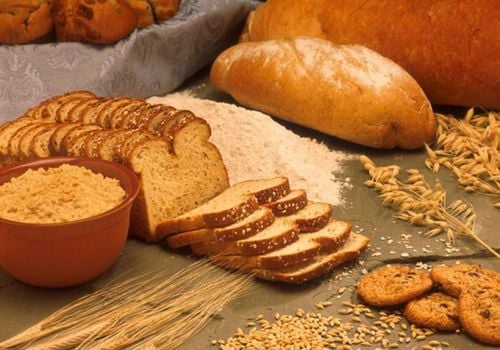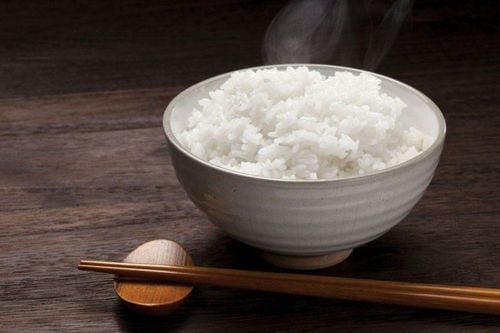This is an automatically translated article.
How do you feel good after a meal, like you have eaten enough without feeling uncomfortable and you can walk after dinner. As counterintuitive as it may sound, the first steps are to master feeling full after a meal. As you master your feelings of fullness, you'll arrive at each meal, ready to eat and with your mind set on taking the time to slow down and eat consciously. This article will help you understand the purpose and methods of mastering satiety after a meal.1. What is energy density?
Energy density is the amount of energy expressed in calories, in a particular weight of food. High-energy foods have a large amount of calories per serving.An example of a food with a high energy density is ice cream because it contains a lot of calories from sugar and fat which is suitable for small servings. Spinach has a low energy density because it contains few calories.
Energy density has been determined by the ratio of macronutrients (protein, fat, carbohydrates), fiber and water. Foods that are high in fiber and water have a lower energy density. Foods with more fat have a higher energy density.
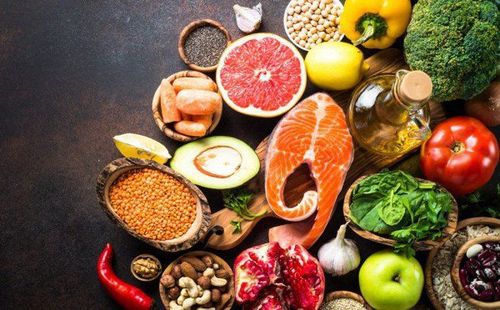
Mật độ năng lượng đã được xác định bởi tỷ lệ các chất dinh dưỡng đa lượng, chất xơ và nước
2. Foods with low energy density
Foods with low energy density include green and colorful vegetables that are rich in fiber. Watery foods like soups, citrus fruits, and melons. Low-calorie diet foods often have low energy loss, but that is not always the case. It's important that you read the Nutrition Facts label to find out how many calories are in the foods you eat.The advantage of foods with low energy density is that they are often rich in nutrients. Many fruits, berries and vegetables are low in calories, high in fiber, and packed with vitamins and minerals.
Some suggestions for low energy density foods are :
Mostly fruits and vegetables Most low fat soups Porridge Skim milk Low fat yogurt Reduced sugar Beans Boiled potatoes Brown rice...
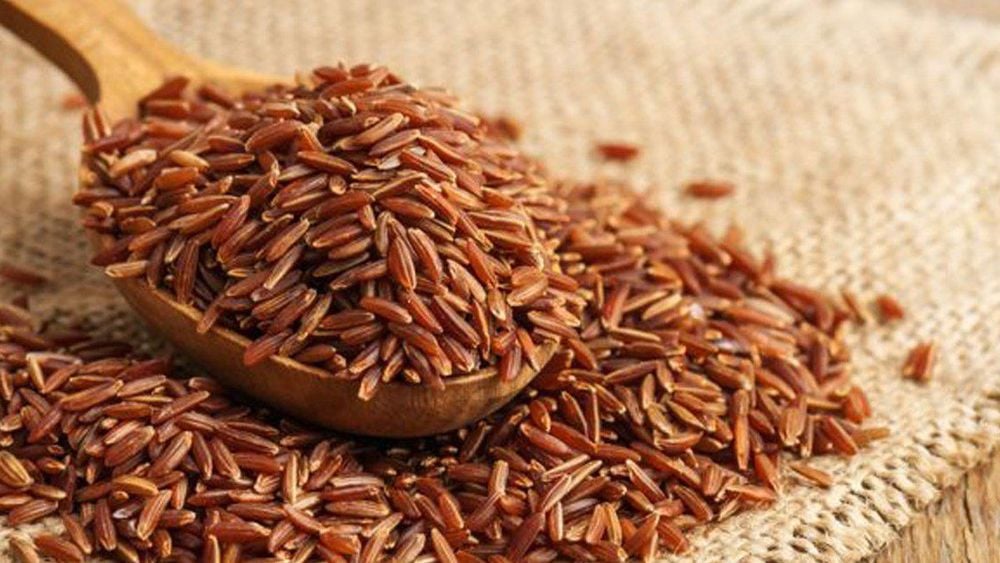
Gạo lứt là một trong số những loại thực phẩm có mật độ năng lượng thấp bạn nên cân nhắc sử dụng
3. Tips for a low energy diet
Choose foods that are high in energy but require water during preparation, such as soups or stews.Adding extra veggies to appetizers or main courses will add bulk without adding extra calories, for example adding vegetables to stir-fries, stews, chili, pasta dishes and salads.
Increase meal intake by adding legumes, such as beans, peas and lentils. Beans provide fiber and protein, but have a low energy density, for example adding beans to peppers, soups or salads. You can also add some rice or pasta to soups or salads to make them more filling.
Choose higher-fiber carbohydrates like whole-grain breads, high-fiber breakfast cereals, brown rice, whole-wheat pasta and potatoes with the skin on.
Choose lean cuts of meat for dishes, remove excess fat and avoid skin on poultry. Choose to add lean minced meat or use a vegetarian alternative, such as mycoprotein.
Add more liquid to dishes to help thicken dishes without adding calories, for example adding canned tomatoes to chili sauce or pasta.
Avoid using too much oil or fat in cooking and try to use only a little butter/fat spread on bread or mayonnaise in sandwiches. You can also leave out the grease and use mayonnaise instead.
Salads can be a great low energy density food but not when they are mixed with high fat sauces! Try using low-fat salad dressings, for example, those made with lemon juice or vinegar.
Use up leftover vegetables for soups and stews. Again, add tofu like beans or lentils for extra clumps. Serve with some rice or wholemeal bread and you have a complete meal!
Add fruit to dessert and use less cream. You can use low-fat yogurt as a substitute for ice cream.
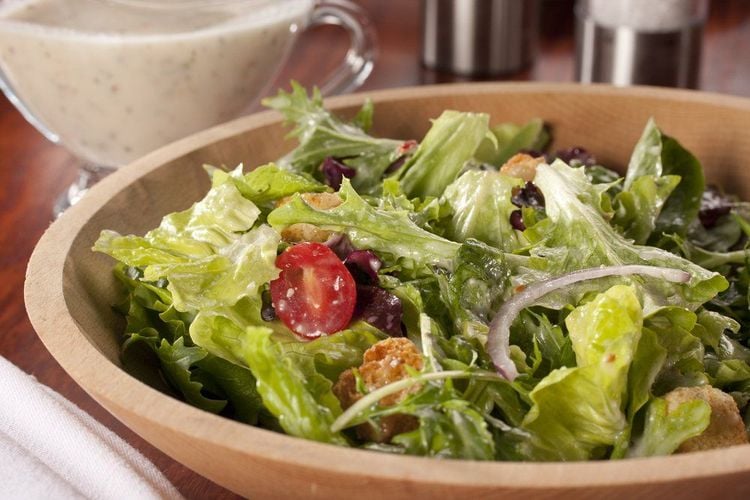
Salad có thể là một loại thực phẩm có mật độ năng lượng thấp tuyệt vời
4. Recipes with foods with low energy levels
These recipes are taken from: Rolls, B. (2005) Mass eating plan: techniques and recipes to feel full with fewer calories.4.1. Minestrone Soup - Snack Supply for 8 people, calories per serving is 92 kcal. Energy density 0.4 kcal/gram
*Ingredients:
2 teaspoons olive oil 1 large onion, chopped 2 medium carrots, peeled and chopped 1 liter low salt stock 2 fruits medium tomatoes, diced 85 g dried, pasta 150 g fresh or frozen spinach chopped 150 g canned beans, rinsed and drained 3⁄4 teaspoons dried thyme 1 teaspoon leaves dried oregano 1⁄2 teaspoons freshly ground black pepper * Preparation
Heat oil in a saucepan over medium heat. Add onions and carrots and cook for 5 minutes, stirring occasionally. Add 250ml of water, add vegetables, tomatoes, thyme, oregano and black pepper. Bring the broth to a boil, reduce heat and simmer, covered, for 20 minutes. Add pasta, bring to a boil, reduce heat and cook for 10 minutes Add beans and spinach and cook over medium heat for 5 minutes 4.2. Vegetarian Macaroni - Snack Supply for 6 people, calories per serving is 355 kcal. Energy density 1.3 kcal/gram
* Ingredients:
225 g dry whole-wheat pasta 2 tablespoons whole-wheat breadcrumbs 1 teaspoon melted or reduced-fat butter 1⁄ 4 teaspoons paprika 420 ml skim milk 3 tablespoons plain flour 165 g shredded, low-fat cheese Chopped cheddar cheese 300g fresh or frozen (and thawed) spinach 200 g canned chopped tomatoes box of 100 g low-fat cheese 25 g Parmesan cheese A little nutmeg 1⁄2 teaspoons salt A little freshly ground black pepper * Preparation
Preheat oven to 190oC Lightly coat with cooking oil Roll noodles according to the instructions on the package. Set aside to drain. Mix breadcrumbs, butter, and paprika in a small bowl and set aside. Heat 360ml of milk in a saucepan over medium-high heat, until evaporated. Whip the remaining 60ml milk and flour in a small bowl until smooth. Add in hot milk and cook over medium-low heat, whisking constantly until sauce thickens (about 3 to 7 minutes). Remove the pan from the stove. Add Cheddar cheese to the white sauce and stir until cheese is melted. Stir together cheese, Parmesan, nutmeg, salt, and pepper. Stir the pasta into the cheese sauce. Spread half of the pasta mixture on a baking dish. Spread the spinach on top, then the diced tomatoes. Spread remaining pasta mixture over tomatoes and sprinkle flour mixture on top. Bake for about 25 to 30 minutes, until bubbly and golden. 4.3. Tuna pita salad - Lunch Offers 4 people, calories per serving is 261 kcal. Energy density 1.3 kcal/gram
* Ingredients
2 tablespoons Dijon mustard 2 tablespoons reduced-fat mayonnaise 1 small purple onion, 1⁄2 red peppers, seeded and chopped 1⁄2 yellow peppers , 2 sticks of celery seeded and chopped 4 medium mushrooms (40 g) sliced 30 g finely shredded spinach 1 can of tuna in spring water with all scales removed and crusted 4 bags whole pitta pieces freshly drunk black pepper * Preparation
Whisk together mustard and mayonnaise in a medium bowl Add onion, bell pepper, celery, tuna and black pepper. Toss the tuna salad until well mixed and set aside. Cut the pitta in half horizontally Divide the top salad mix, spinach, and mushrooms into 2 pitta halves. 4.5. Spaghetti - Dinner Supply for 4 people, calories per serving is 463 kcal. Energy density 1.0 kcal/gram
* Ingredients:
380 g dry MSG, 200 g add minced lean beef (5% fat) 1 onion, 1 medium carrot, 1 stalk of celery chopped parsley, 1 red pepper, seeded and minced 2 cans chopped tomatoes 1⁄2 teaspoons ground black pepper 1 tablespoon dried oregano leaves 1 bay leaf 1 clove of garlic, minced * Cooking
Dry frying minced lean meat in large skillet until golden brown. Add minced onion, garlic, carrot, mushrooms, celery and red pepper and sauté for 5-10 minutes. Add the canned tomatoes, bay leaf, oregano, and peppercorns to the mixture and cook over low heat for about 15-20 minutes, stirring occasionally. Prepare pasta according to the instructions on the package. Mix the spaghetti and serve with the bolognese mixture.
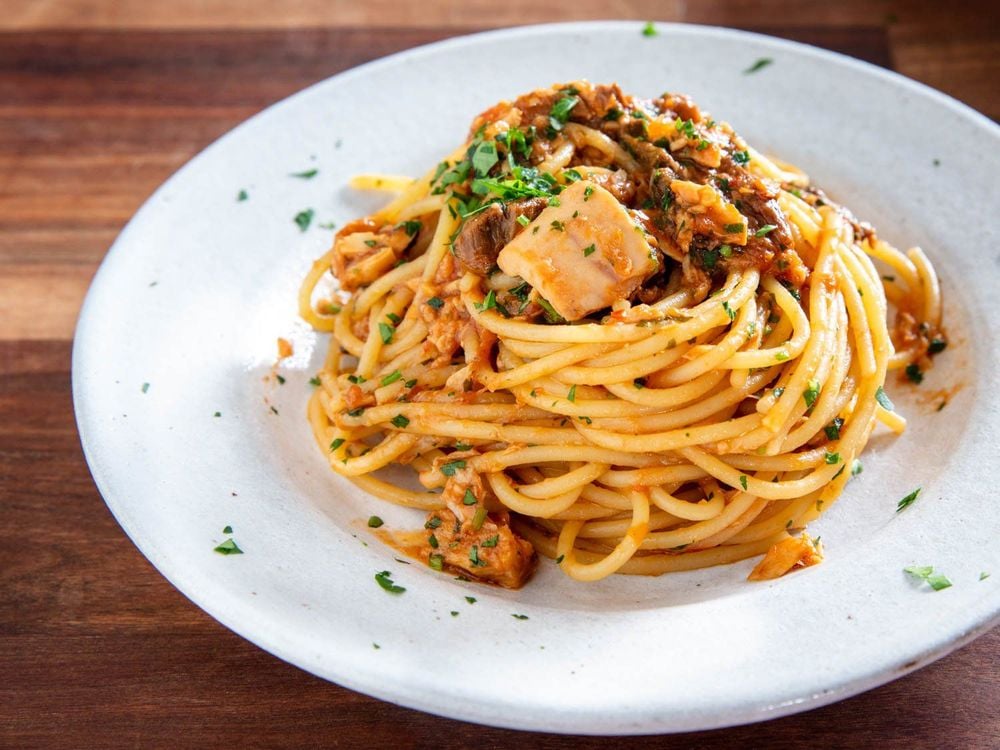
Spaghetti có thể là một lựa chọn phù hợp cho bữa tối với những thực phẩm có mức năng lượng thấp
* Ingredients:
100 g low fat yogurt 1 tablespoon granola 5 fresh strawberries (60g) 15 fresh raspberries (60g) 50 g fresh blueberries 1 tablespoon honey coffee * Processing
Wash strawberries, raspberries and blueberries Put all of them in a large bowl and serve with low-fat milk tea. Sprinkle granola on top and then add honey. Here are a few low-energy-density recipes. You may not be used to these foods at first, but after a while you will notice a clear difference.
Hope the information above has provided you with more options for low energy density recipes. Wish you always have a scientific diet and improve your work productivity and improve your life.
Please dial HOTLINE for more information or register for an appointment HERE. Download MyVinmec app to make appointments faster and to manage your bookings easily.
Reference sources: nutrition.org.uk, verywellfit.com




